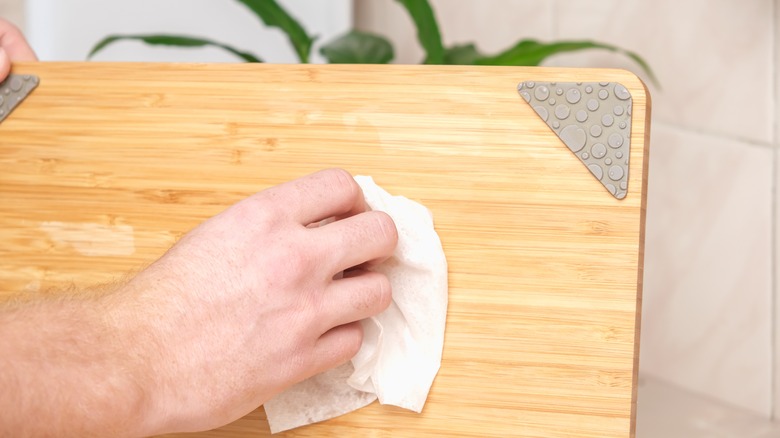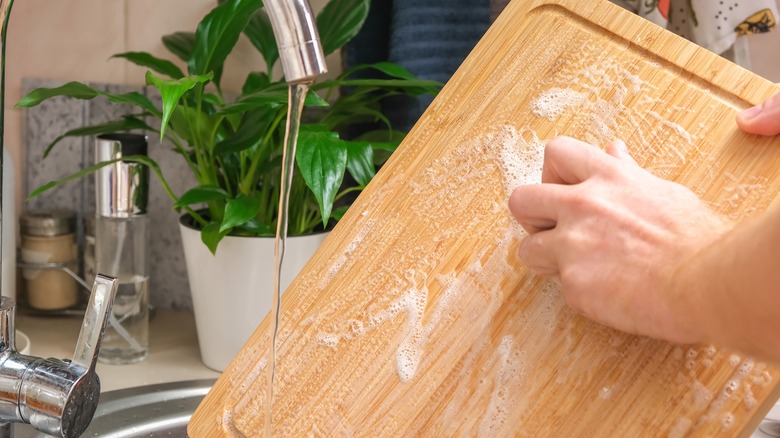Why It's Essential To Properly Dry Your Bamboo Cutting Board
From cookware to cutting knives and the color of your plates to the material of your cutting board, just like fashion, the food world has some trending styles of its own. And just like people are ditching synthetic fibers and fast fashion from their closets (via Forbes), foodies are saying goodbye to plastic in their kitchens — meaning those plastic cutting boards are officially out or hidden inside your cupboard until you want an easy cleanup.
The truth is wood, bamboo, and plastic cutting boards all have their pros and cons. But, while they may come at a friendlier price, plastic cutting boards tend to harbor much more bacteria than the other options on the market — mainly in all the cuts and marks your knives make on them over time (via North Carolina State University). Wood and bamboo boards, on the other hand, don't just look prettier but can actually trap and kill that bacteria.
The general consensus is to keep one of each — a plastic cutting board for meat and poultry and wood or bamboo for fruits, vegetables, and anything ready to eat. This will help to prevent cross-contamination, however, it really comes down to how you clean and care for your boards and if you're using a bamboo one, you'll want to take extra care to dry it properly.
Drying your bamboo cutting board
Bamboo cutting boards have a lot of pros. According to Bon Appétit, they're lightweight, reversible, and look really good on your countertop. They're also considered much more eco-friendly than plastic and wood cutting boards, seeing as they're made out of bamboo, an abundant, quick-growing grass that requires no pesticides or fertilizers (via Green Matters). But, as mentioned before, all cutting board materials have their cons — bamboo's being that it's more porous than the traditional wood cutting board.
Porosity is a big buzzword in the world of cutting boards because it protects your fancy cooking knives and absorbs, traps, and eventually kills the harmful bacteria you want to keep far away from your food. All wood, whether teak, maple, walnut, or acacia, and bamboo cutting boards are porous — giving them the magical and convenient ability to heal themselves, per Food52. However, because bamboo cutting boards are slightly less porous than wood ones if they aren't kept dry, MasterClass claims they can collect more of those pesky germs.
To keep your bamboo cutting boards squeaky clean, it's recommended that you dry them off with a dishcloth each time you wash them. Then, instead of laying them flat, place your bamboo boards in a vertical position while they air dry. This technique will ensure it's squeaky clean the next time you use it.

